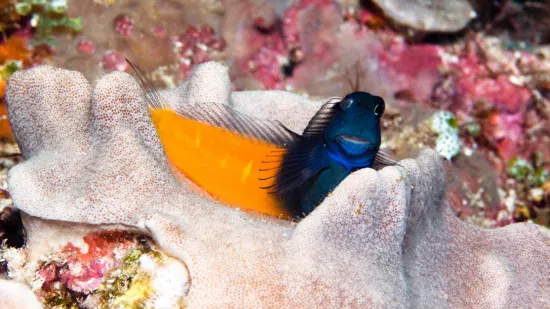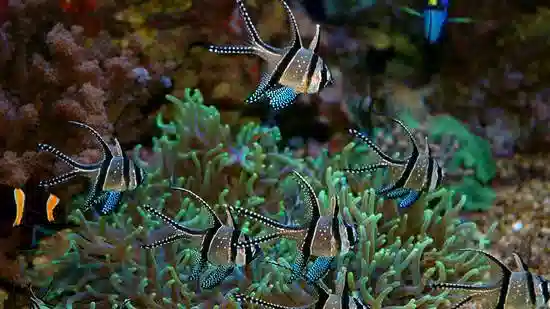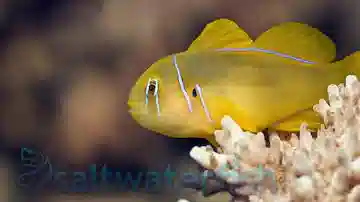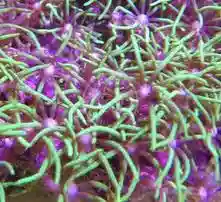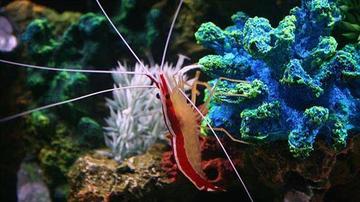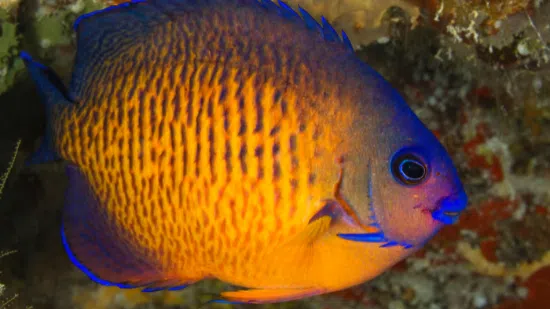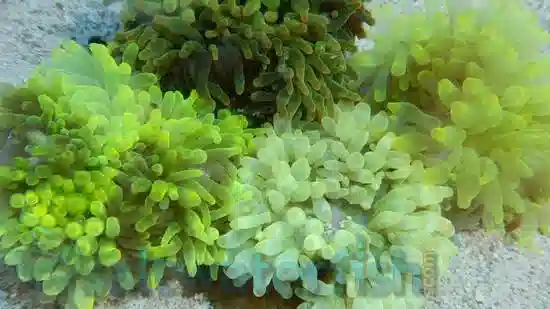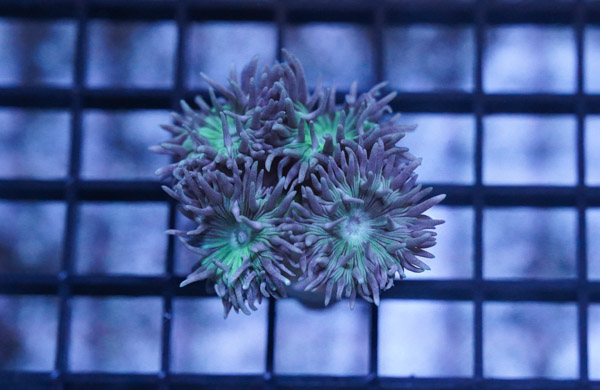Talbot's Damsel
Chrysiptera talboti
(8 Reviews)

Talbot's Damsel
Chrysiptera talboti
(8 Reviews)
{{ item.name }}
Size: {{ item.extra_field_3 }}
${{ getFormattedPrice(item.saleprice) }} ${{ getFormattedPrice(item.price) }}
Free Shipping
With
$199.00
or more in Marine Life.
More details...
Talbot's Damsel Care Facts
| Care Level: | Easy |
|---|---|
| Temperament: | Semi-aggressive |
| Diet: | Omnivore |
| Reef Safe: | Yes |
| Minimum Tank Size: | 20 gallons |
| Max Size: | 2 inches |
Talbot's Damsel (Chrysiptera talboti) Care Guide
The Talbot's Damsel, scientifically known as Chrysiptera talboti, is a striking and resilient marine fish species that can be a valuable addition to your saltwater aquarium. This comprehensive guide provides essential facts about the Talbot's Damsel, its care requirements, compatibility, and why it's a sought-after choice for marine enthusiasts.
Habitat of Talbot's Damsel
Talbot's Damsels are native to the warm waters of the Indo-Pacific region. They are commonly found in coral-rich environments, lagoons, and reef flats. These habitats offer them shelter, food, and a variety of other resources.
Reef Safe Nature
The Talbot's Damsel is generally considered reef safe, making it a suitable choice for reef aquariums. They do not exhibit destructive behaviors towards corals or other invertebrates.
Size of Talbot's Damsel
These damselfish typically reach a length of about 2 to 3 inches (5 to 7.5 cm) when fully grown, making them well-suited for smaller to medium-sized aquariums.
Lifespan in Captivity
With proper care and a suitable environment, Talbot's Damsels can live in captivity for up to 5 to 7 years.
Diet in Captivity
In the wild, Talbot's Damsels are omnivorous and primarily feed on zooplankton, algae, and small invertebrates. In captivity, their diet should be diverse and consist of high-quality marine pellets, frozen foods such as Mysis shrimp and brine shrimp, and occasional live food. Providing a balanced diet helps maintain their health and vibrant coloration.
Aquaculture Availability
While some damselfish species are aquacultured, Talbot's Damsels are typically collected from the wild. Ensuring sustainable and ethical sourcing is essential to reduce the impact on natural populations. Choose a responsible supplier like Saltwaterfish.com.
Sexual Dimorphism
Talbot's Damsels do not exhibit significant sexual dimorphism, with males and females displaying similar external characteristics.
Symbiotic Relationships
Talbot's Damsels are not known for engaging in specific symbiotic relationships with other marine species. They are typically found in social groups within their natural habitat, where they benefit from safety in numbers.
Juvenile vs. Adult Coloration
Juvenile Talbot's Damsels often display vibrant blue coloration with striking electric blue lines and spots. As they mature into adults, their coloration may become more subdued, with some individuals developing a pale yellowish body color.
Compatibility with Tank Mates
Understanding the compatibility of Talbot's Damsels with other tank inhabitants is crucial to maintaining a thriving aquarium.
Temperament
Talbot's Damsels are known for their territorial and sometimes aggressive behavior, especially towards smaller or similarly sized fish. They are best suited for aquariums with larger, more robust tank mates.
Suitable Tank Mates
When selecting tank mates for Talbot's Damsels, choosing species that can coexist peacefully with their territorial tendencies is essential. Here are five specific species that can be compatible with Talbot's Damsels:
- Six-Line Wrasse (Pseudocheilinus hexataenia): These active and bold wrasses match Talbot's Damsels well.
- Yellowtail Damselfish (Chrysiptera parasema): These damselfish are of similar size and can cohabit with Talbot's Damsels.
- Firefish Goby (Nemateleotris spp.): Firefish gobies are peaceful and typically avoid territorial conflicts.
- Clownfish (Amphiprion spp.): Clownfish are known for their symbiotic relationships with anemones and can peacefully coexist with Talbot's Damsels.
- Bicolor Blenny (Ecsenius bicolor): Bicolor blennies are peaceful and often occupy different niches within the aquarium, reducing competition.
Tank Requirements
Minimum Aquarium Size: A tank with a capacity of at least 20 gallons is recommended for a pair or small group of Talbot's Damsels. Larger tanks provide more swimming space and reduce territorial conflicts.
Aquascaping: Create a well-structured aquascape with plenty of hiding spots, live rock, and caves to offer territory for the damsels. Ensure that all tank mates have access to hiding spots to minimize stress.
Water Conditions
Maintain stable water parameters with the following guidelines:
- pH: Maintain a stable pH level between 8.1 and 8.4.
- Salinity: Keep the salinity within the range of 1.023 to 1.025.
- Water Temperature: The recommended temperature range is 74°F to 78°F (23°C to 26°C).
- Water Flow: Moderate water flow is suitable for Talbot's Damsels, replicating their natural reef habitat.
Other Common Names
Talbot's Damsel may also be known by other common names such as Talbot's Demoiselle or Talbot's Damselfish.
Why Choose Talbot's Damsels from Saltwaterfish.com
Selecting Talbot's Damsels from Saltwaterfish.com ensures you receive healthy and acclimated specimens from reputable sources. We prioritize the well-being of marine life and provide top-quality fish that are carefully selected and handled to ensure a smooth transition to your aquarium. Talbot's Damsels can add vibrant color and activity to your saltwater aquarium, making them a captivating choice for marine enthusiasts.
Beautiful, got 2
Reviewed by: Sherry Cash on April 11, 2024
One of the most friendly of the Damsel species. Make sure you have him your tank first before adding extra Damsels. If your tank is big enough, you’ll have no worries. A very pretty color in the tank and will show in a reef tank.
Reviewed by: Dale Pichelmayer on March 17, 2024
Reviewed by: Cameron Kreger on March 17, 2024
One of the kindest damsels in the family. Took to the tank really quickly and luckily didn’t get picked on like damsels usually do when they get a new home.
Reviewed by: Dale Pichelmayer on Feb. 4, 2024
Nice fish and acclimating well with the other fish.
Reviewed by: Paul Carrozza on Jan. 31, 2024
I have far, i think they are the most beautiful damsels
Reviewed by: Eric Wilson on Nov. 9, 2023
My new favorite damsel
Reviewed by: Eric Wilson on Oct. 24, 2023
Nice attractive and very active damsel at a very reasonable priceh
Reviewed by: Esther Murphy on Feb. 6, 2018


